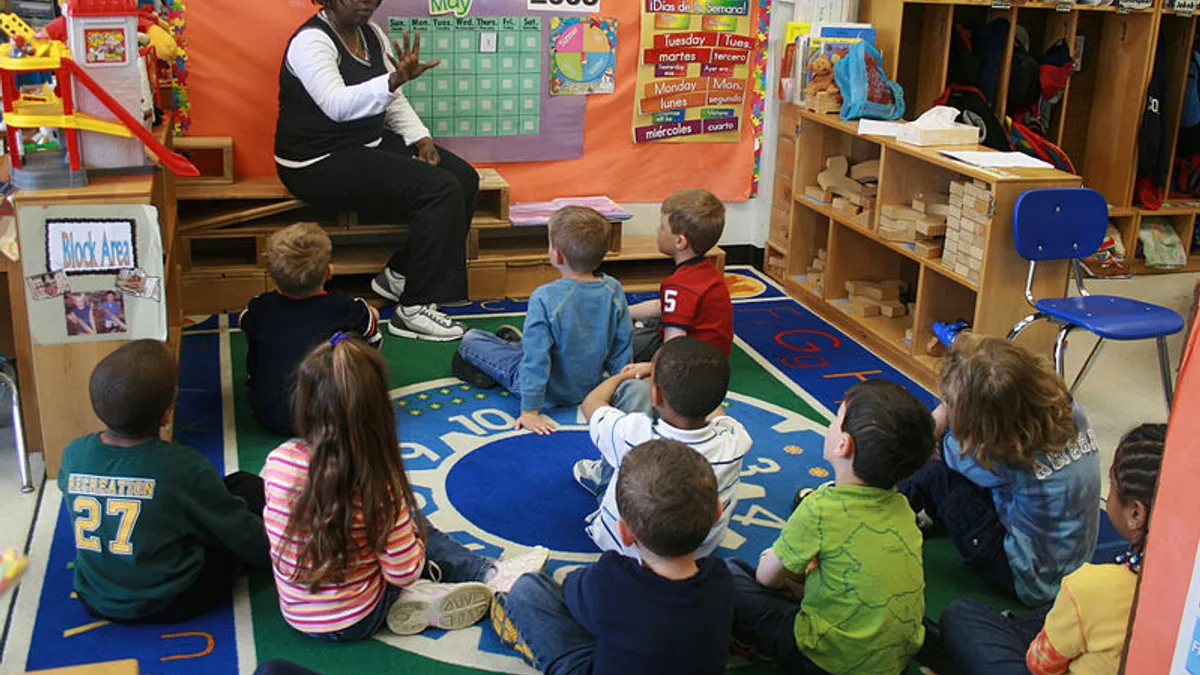Dive Brief:
- The percentage of 3- and 4-year-olds enrolled in public preschool increased overall from 2005 to 2019, according to a new analysis by the U.S. Census Bureau that stopped short of the pandemic’s onset. During that same time period, the percentage of children in private preschools decreased.
- Enrollment in public preschools rose by 3.4 percentage points between 2005 and 2008, after which it dipped until 2013, likely due to the global recession and parents’ inability to afford preschool. However, enrollment slowly trended upward once more between 2013 and 2019.
- A separate analysis confirms predictions and findings that pre-K enrollment dropped during the pandemic. For the first time since 1996, less than half of youngsters ages 3 and 4 were enrolled in preschool during the pandemic. Enrollment for this age group dropped from 54% in 2019 to 40% in 2020.
Dive Insight:
Spending on preschool programs surpassed $9 billion for the first time in 2019-20 across 44 states that funded preschool and Washington, D.C., according to a separate report by the National Institute for Early Education Research. Leading up to this time period, there was also a shift from parents enrolling their children in private preschools to public ones. By 2019, almost 60% of parents were sending their children to public preschools, an increase of 6.6 percentage points since 2005.
The Northeast and West are considered “high-growth areas,” according to the report. In the Northeast, states enrolled 54% of their children or more in preschool.
Preliminary numbers released by the U.S. Department of Education in June showed enrollment for the 2020-21 school year overall dipped by 3%, with losses concentrated primarily in pre-K, which experienced a 22% drop in enrollment.
Peggy Carr, acting commissioner for the National Center for Education Statistics, said the declines were “widespread and affected almost every single state and every region of the country."
However, states experienced losses at different levels, with drops varying from 15% to 41%, according to the National Institute for Early Education Research.
Whether enrollment will rebound or continue to drop in the coming years is still a question mark. Some experts have predicted that enrollment will bounce back fairly quickly — as soon as this school year — and especially in the early grades. Others are waiting on later data releases and are hesitant to speculate.
For the 2021-22 school year, anecdotal evidence indicates preschool enrollment numbers and predictions varied across districts, with some expecting declines and others anticipating boosts in numbers.
Past evidence shows preschool enrollment aligned largely with state and local governments’ efforts to invest in early education. Now, some states say they are still on track to meet long-term enrollment goals and continue to direct dollars toward related programs.
On the federal level, the Build Back Better Act that recently passed the House makes universal pre-K a real possibility. Supporters say the legislation puts working families first, while critics say it burdens taxpayers.
The legislation is likely to hit a roadblock and undergo change in the Senate














